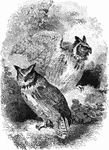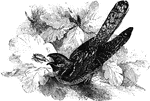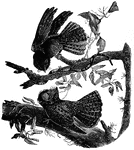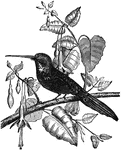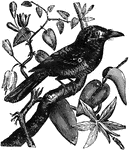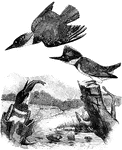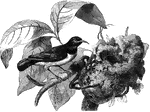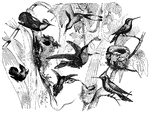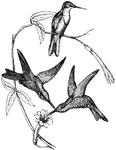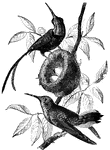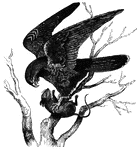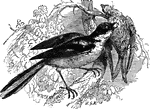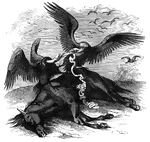
Turkey Buzzards
Genus Cathartes, found in the Americas, sometimes as far north as New England. These buzzards…
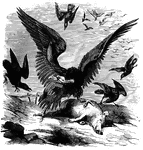
Black Vulture
Black vulture (or carrion crow), genus Coragyps, about the size of a small turkey. This group…
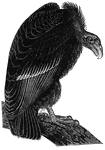
California Vulture
C. Californianus, a large species of vulture, found only on the western side of the Rocky Mountains,…
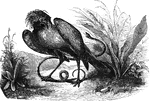
Secretary Vulture
G. serpentarius, known as the serpent vulture because it feeds on snakes. It has a distinctive…

Head of an Eagle Owl
Head of an eagle owl. It has large eyes for seeing at night, and a hooked beak for snaring its prey.
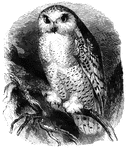
White Owl
The white owl (also known as the snowy or ermine owl), found in the colder latitudes of the world. Its…
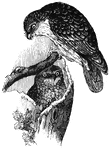
Athene conneviens
Athene conneviens, which derive their name from the Greek goddess of wisdom, supposedly for their meditative…
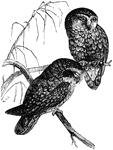
Athene Maculta
Athene maculta, which derive their name from the Greek goddess of wisdom, supposedly for their meditative…
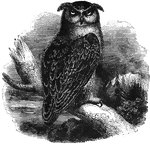
Eagle Owl
Eagle or great-horned owl, found in Europe and northern asia. It feeds on hares, rabbits, moles, mice,…
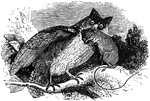
Scops-Eared Owl
A scops-eared owl feeding on a small rodent. It is common in Central and Southern Europe.
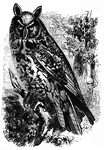
Great Short-Eared Owl
Genus ascalaphia, a large owl, native to southern Europe and northern parts of Egypt.
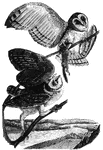
American Barn Owl
A pair of American barn-owls, one of which is grasping a small rodent in its claws.

Passeres
An assortment of passeres, one order of birds. The legs, feet, and talons are generally smaller than…
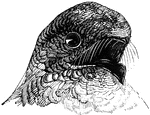
Head of a Goat-Sucker
Head of the goat-sucker. It bears some resemblence to an owl, with a large head and eyes, as well as…
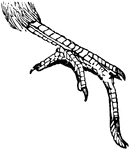
Foot of a Goat-Sucker
The foot of a goat-sucker, with a distinctively longer middle toe, believed to be used for either grasping…
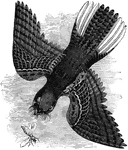
Whippoorwill
A whippoorwill chasing a winged insect. This bird derives its namesake from its distinctive call.

Fork-Tailed Psalurus
Native to South America, the males of this species are known for their pair of prominent tail feathers.

Night Hawk
Found in America, Mexico and the West Indies, this species averages nine to ten inches in length and…
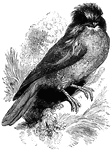
Gold River Goat-Sucker
A large bird, averaging about twenty inches in length when full-grown. It is native to Australia.
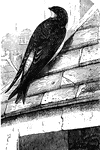
European House Martin
The European house-martin, which has an affinity for living in the vicinity of man.
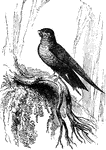
Esculent Swallow
The esculent swallow's nest is prized among the Chinese as a delicacy. It is native to many parts of…
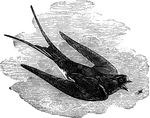
Common European Swallow
The common European swallow, which averages approximately six inches in length. This migratory bird…
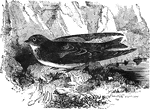
Bank Swallow
The bank swallow (also known as the sand martin) lives in large communities, often of several hundred…
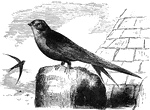
Common European Swift
This swift prefers to build its nest under the eaves of houses, in holes around steeples, in old towers,…
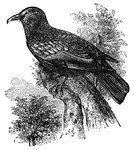
Common Roller
The common roller, which subsists on a diet of fruits and insects. It builds its nests in the holes…
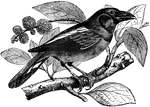
Java Eurylame
This small bird is native to Java, Sumatra, and New Guinea. It is noted for its large bill.
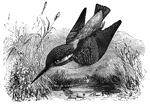
European Kingfisher
Found throughout Middle Europe, the European Kingfisher is a solitary bird that inhabits wet areas,…

Black-Banded Dacelo
The black-banded dacelo, found around the Cape of Good Hope. They are known for feeding on earthworms,…
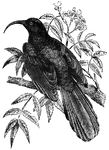
Namaqua Bee-Eater
The namaqua bee-eater, native to Western Africa. Its diet consists of insects, particularly bees and…
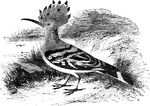
Hoopoe
Widely distributed over Africa, Asia, and Europe, the hoopoe has a distinctive crest of feathers on…
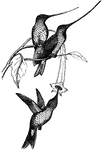
Hummingbirds
A group of humming birds with particularly long and narrow beaks, well-adapted for sipping nectar from…

Hummingbirds
Four humming birds, two of which are resting on a branch, while the other two cavort in the air above.
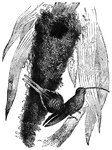
Supercolious Hummingbird
The supercolious hummingbird, noted for it's unusually large nest. It is native to Brazil.
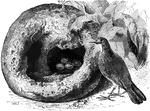
Hornero Ovenbird
The horneo oven-bird, which builds its nest out of clay, straw, and dried vegetation.

Common European Nuthatch
A small, omnivorous bird, which gets its name from the hatches or hammerings it leaves on nuts.

Great Carolina Wren
The great Carolina wren, known for its ability to imitate various other songbirds.
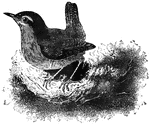
Common European Wren
Common throughout Europe, the European wren frequents hedges, gardens and bush places. They feed primarily…
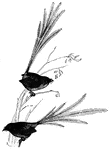
Emu Wren
Native to Australia, this is known to natives of New South Wales as waw-gul-jelly. It is shy…
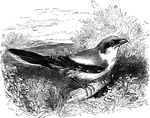
Great Butcher-Bird
Also known as the gray shrike, the great butcher-bird is known for securing its prey to thorns so that…
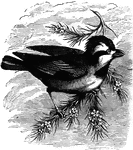
Crested Pardalotte
Usually living around small mountain streams, large spiders have been known to attack and eat the vrested…
